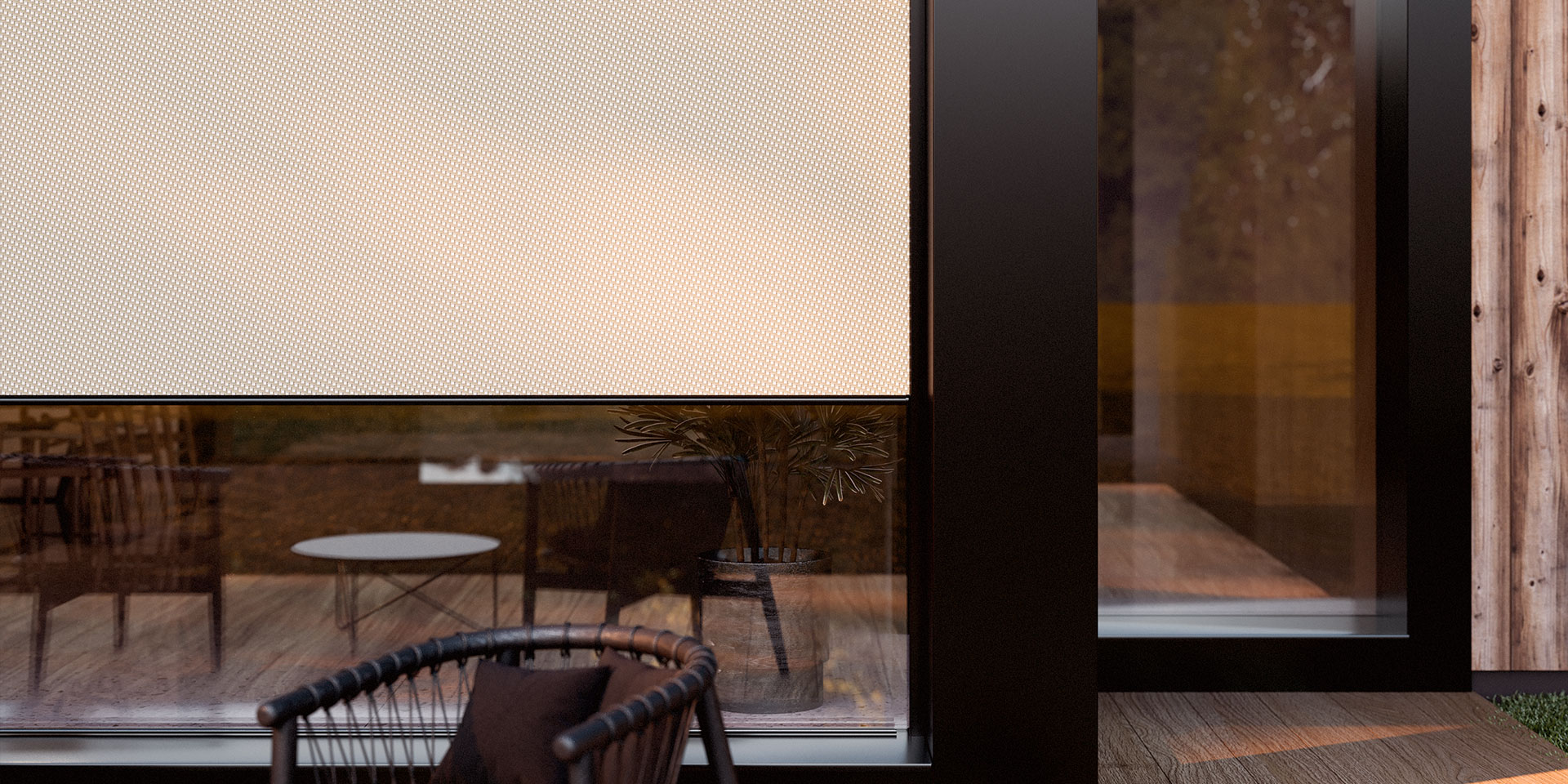Complete guide to the maintenance of screens
External textile screens require almost no maintenance. You just need soapy water or an ordinary detergent and a fine brush to clean them. If you have a high-pressure cleaner at home, you can also wash the screens with a high-pressure washer but only using the lowest water pressure. At the same time, however, do not expose the screens to unnecessary risks – if there is a strong wind or heavy rain or if you are working around your house, it’s better to pull them up.

Hoover and wash the screens twice a year
Most people clean their screens when cleaning their windows. It is enough if you do that twice a year – always in spring and in autumn. However, wash your screens ideally on days which are rather overcast as strong sun may cause the screens to dry quickly after washing and stains will then remain on the surface.
Always hoover or dust the screens first to get rid of the largest impurities and then rinse them with water. If you have a high-pressure washer, set it to the lowest pressure level and wash the screens with caution. When cleaning them manually use, for example, soapy water or an ordinary detergent and wash them with a sponge or a fine brush. Afterwards, rinse them with clean water again.
On the other hand, avoid aggressive or abrasive (sandy) cleaning agents that could slightly fray and disrupt the surface of the fibres, thereby decreasing the service life of the screen considerably. On top of that, you would not be able to enforce the warranty in such a case.
Do not expose your screens to unnecessary risks
To keep your external textile screens in perfect condition as long as possible, do not expose them to unnecessary risks. Although they are very tough, it’s better to wind them up into the box if there is a really strong wind or thunderstorm.
If you do not manage to protect your screens from rain in time, always wait until they dry completely. Do not wind up the screens when wet – first, they are then heavy and load the motor needlessly and second, they may develop mould in the box or freeze in winter.
Similarly, pull the screens up when you are working around your house – for example, when you are painting the façade or using a circular saw. If would be a great shame to stain them with paint that is hard to remove or damage them by sparks.

In the event of a fault, always call a service firm
Also made a visual check at least once a year to make sure that the screens are in order. Check the zip joint between the screen and the guide rails and verify that the screen winds up evenly, not askew. Have a look at the fabric too for any holes and listen to the motor to see out whether or not it is too noisy or it whistles.
Do not try to repair screens yourself. If you find anything odd about the shading, call the service firm that installed it to help you. If you repair the screen yourself, you will void the warranty. What’s more, there is a risk of you causing damage to the screen instead of repairing it.
If you have any queries concerning external textile screens and their maintenance, contact any of our installation partners.



